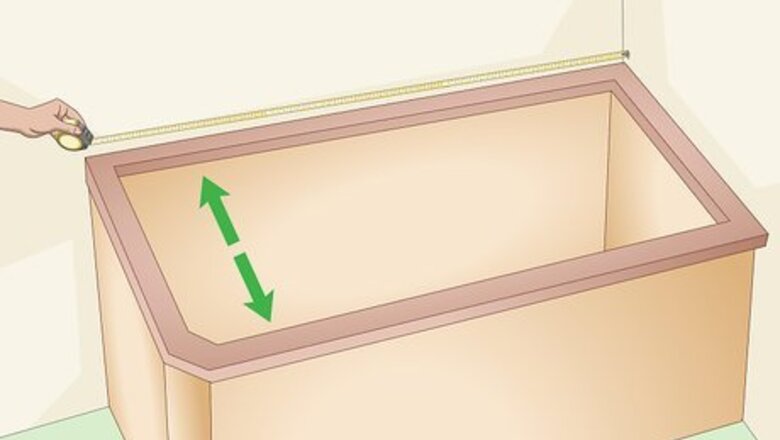
views
Cutting Countertops to Fit with a Circular Saw
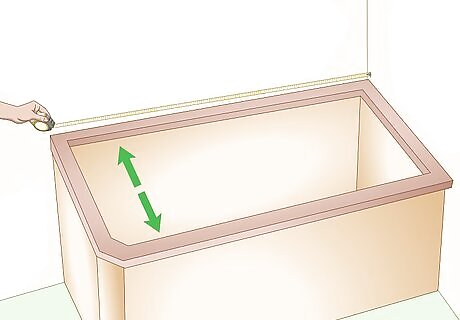
Measure the counter space you want to cover. Use a measuring tape to find the length and width of the space and write them down to refer to when shopping for laminate countertop. Countertops come in a standard width and pieces of different lengths that you can cut down to size. The standard width of countertops is 25 in (64 cm), which allows for a slight overhang when covering standard cabinets.
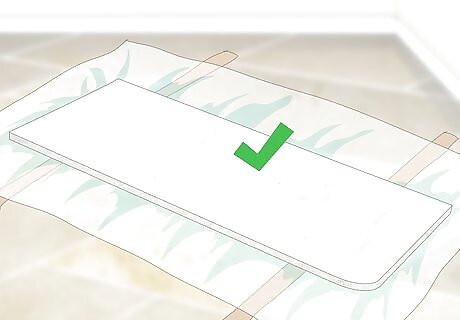
Buy a stock piece of laminate countertop. Laminate countertop comes in stock sizes, from 4–12 ft (1.2–3.7 m) long, in 2 ft (0.61 m) intervals. Buy a piece of stock laminate countertop as close to the correct length as you can. Tip: Retailers who you buy your countertop from will also sell matching laminate strips that you can buy to cover the exposed part of the countertop after you make any cuts. If you get lucky, you might find that the counter area you need to cover is exactly divisible by 2, in which case you won’t need to cut the countertop to fit. If not, proceed with cutting the countertop to fit.

Mount the laminate countertop on a workbench or sawhorses. Put the section of stock countertop that you purchased on a stable work surface. Leave the part that you are going to cut hanging off. You can clamp it to the work surface with C clamps for added stability. This is especially helpful for smaller, lighter pieces that have a higher tendency to move around.
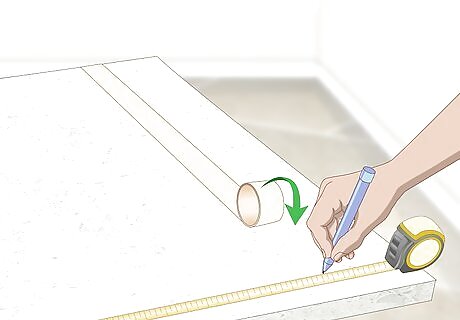
Mark your cut line and cover it in masking tape to protect the laminate. Measure in from the part you are going to cut off with a measuring tape and draw a line where the cut will go. Stick a strip of masking tape over the countertop widthwise, so the mark you made is centered underneath, to keep the laminate from chipping during cutting. Use masking tape that is at least 1 in (2.5 cm) wide for this.

Use a carpenter’s square to draw the cut line onto the masking tape. Draw a straight line all the way down the masking tape exactly where you need to cut the countertop. Measure again the length of the countertop to the line you drew to be sure you put it in exactly the correct spot. Always measure twice and cut once! You can always trim off more if you need to.
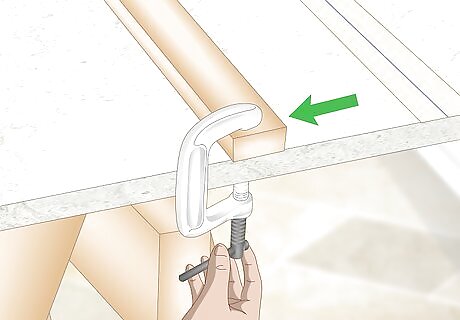
Clamp a piece of scrap wood to the countertop with C clamps as a saw guide. Measure the distance between the saw’s blade and the outside of its shoe (the metal guard) and add ⁄16 in (0.16 cm) to it. Measure this distance in from the side you are cutting off, then clamp the wood widthwise to the countertop to create the guide rail. For example, if the distance between the blade of the saw is 3 in (7.6 cm), then clamp the wood 3 ⁄16 in (7.8 cm) away from the line. The extra ⁄16 in (0.16 cm) allows a little room for error. In case any of the laminate chips, then you can sand it away after cutting. Clamp the wood to the part of the counter that you are not cutting off. In other words, if you are cutting off the end of the countertop at the right hand side, then clamp the wood to the left hand side of the line. An approximately 1 in × 2 in (2.5 cm × 5.1 cm) piece of wood is sufficient for the guide rail.
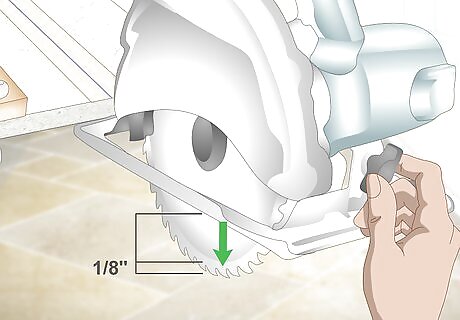
Set the depth on your circular saw to ⁄8 in (0.32 cm) deeper than the countertop. Measure the thickest part of the countertop and set your saw to just a bit deeper than that thickness. This will allow the saw to cut cleanly through the whole countertop. The countertop will probably be the same thickness everywhere. However, it’s a good idea to measure it in a couple different places and use the largest number to set your saw depth if it varies at all. Make sure that your saw blade is designed to cut through laminate particle board.
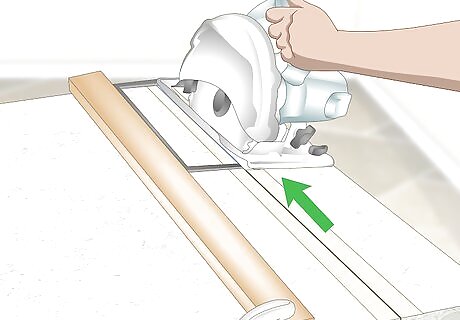
Cut all the way through along the line and against the wooden guide fence. Hold down the power button of your saw to get it up to full speed before you start cutting. Carefully place the blade against the start of the cut line and the saw’s guard against the wooden guide fence you made. Push away from you along the line to cut all the way through the countertop. Always get your circular saw up to full speed before you begin a cut to ensure a smooth cut. If you aren’t experienced with using a circular saw, then you can practice cutting into the scrap section of the counter that you are going to remove to get a feel for it.
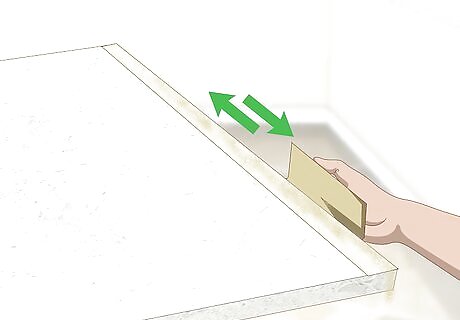
Sand the edge you cut so it is perfectly even with your mark. Sand with fine-grit sandpaper (like 120-grit) using downward strokes to avoid chipping the laminate. Remove the masking tape after the edge is completely even with the cut line. You don’t need to sand if you cut along the line perfectly. You can just remove the tape and you’re done!
Making a Hole for a Sink with a Jigsaw
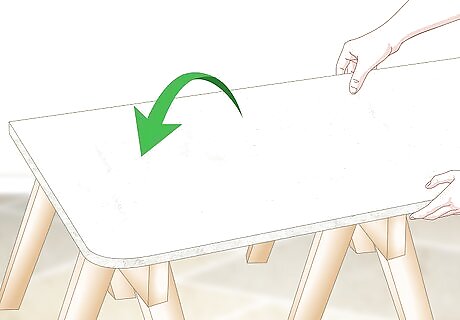
Put the laminate countertop on a pair of sawhorses. Place the pair of sawhorses wide enough so that the part you are going to cut out is between them with nothing below. Use C clamps to clamp the countertop in place to the sawhorses so it doesn’t move during cutting. Make sure you have plenty of room to work and maneuver the jigsaw.
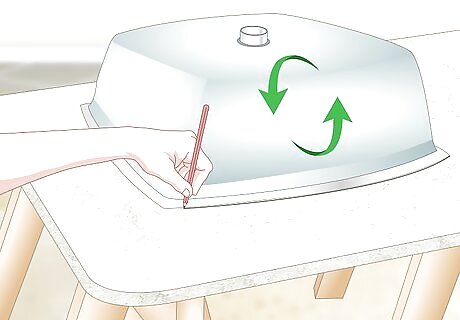
Trace around the sink upside down on the countertop with a pencil. Flip the sink over onto the countertop so it is upside down where you want it to sit. Hold it in place and carefully trace the outline with a pencil. Some sink manufacturers will provide a template that you can use to trace the exact size of cutout you need for the sink onto the counter. This applies to overmount sinks that sit on top of your laminate countertop with a mounting lip.

Measure the sink’s mounting lip. The mounting lip is the rim around the sink that will sit on the countertop. Use a measuring tape to measure the distance between the outside edge of the lip and the actual basin of the sink that will sit beneath the counter. The goal is to create a cutout in the counter that fits the sink as tightly as possible. You will be able to make any adjustments at the end.
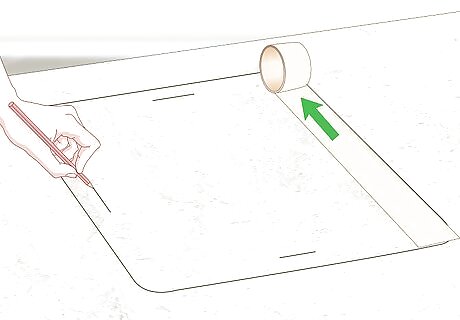
Mark your cut lines in from the sink's outline and cover them with masking tape. Set a measuring tape to the width of the mounting lip, then measure in from the outline of the sink on all sides and make new lines. Cover them with strips of masking tape. For example, if the lip is ⁄2 in (1.3 cm), then measure in from the lines you traced ⁄2 in (1.3 cm) on all sides and lay tape down along the new lines.
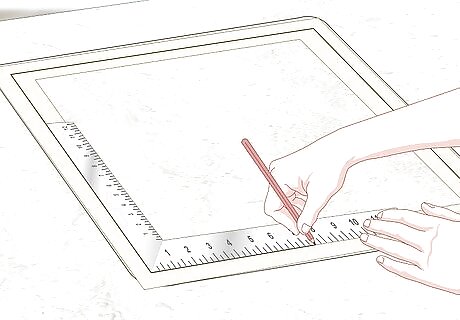
Use a carpenter’s square to draw cut lines in the center of the masking tape. Trace lines along the edge of a carpenter’s square through the center of each strip of masking tape. This will show you where to cut out with your jigsaw to get an exact fit for the sink. Remember that if you make the cut out a little too tight, you can cut off more at the end to get the sink to fit snuggly. When in doubt, mark the outline of the sink a little smaller than you think you need to.

Screw a piece of wood to the middle of the piece you are cutting out. Lay it flat it across the middle of the part you are going to cut out. Put a single screw through the middle of the piece of wood into the middle of the the piece you are going to cut out to support it and keep it from breaking away too early. Since the piece of wood is longer than the part you are cutting out, the ends of it will be resting on the countertop and support the cutout until you are done cutting all the way around it. Using just a single screw in the middle will allow you to rotate it to complete the cuts with your jigsaw on either side of it.
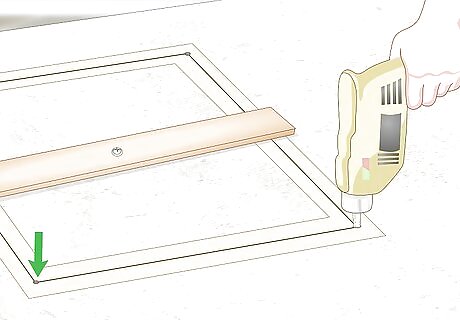
Drill a hole in each corner big enough to fit your jigsaw blade into. Select a drill bit that is just larger than the blade of your jigsaw. Attach it to your drill and make a hole on the inside of each corner of the cutout so that you can slide the jigsaw in and out at the corners. Technically, you could get away with just 1 starter hole to allow you to slide the jigsaw in. However, if you make 4 you can maneuver more easily at the corners.
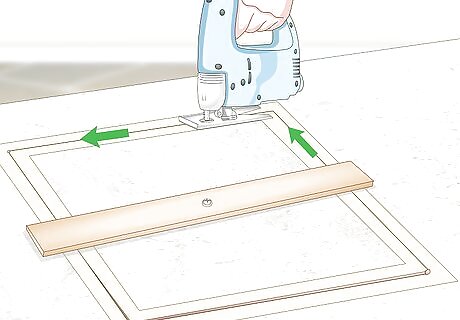
Cut all the way around the lines you made on the masking tape with your jigsaw. Slide the jigsaw blade into the hole at the corner you want to start cutting from. Turn it on and start cutting along the lines until you have separated the cutout from the countertop. Lift the cutout out and discard it. Tip: You can get special laminate cutting blades for jigsaws that only cut on the downward stroke in order to keep the laminate from chipping. When you reach the ends of the piece of wood you screwed across the cutout, remember to rotate it to let you finish the cut through that side. Don’t worry if your lines aren’t perfectly straight. The mounting lip of the sink will cover up any minor imperfections.
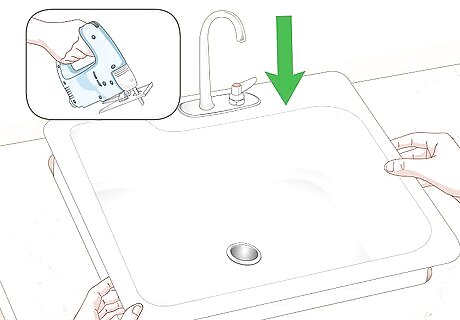
Test the sink and make any adjustments until it fits. Lower the sink into the cutout and see if it fits. You are done if it fits into the cutout and the mounting lip rests flat all the way around. Use your jigsaw to trim off more countertop if you need to to make it fit. You don’t need to worry about sanding the edges of the cutout since they will be covered up by the sink.



















Comments
0 comment